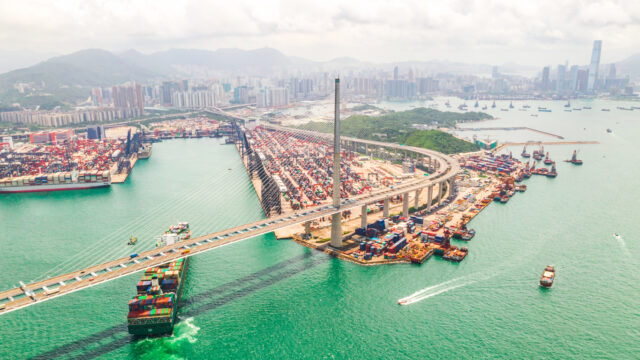The year ahead has the potential to be a watershed moment for the procurement industry, as infusions of leading edge technology and process innovation conspire to enable procurement’s shift from spend management to strategic leadership. Increasingly, leadership is recognising the potential of procurement to guard against risk, drive sustainable practice, and be a key enabler in helping the business identify and capitalise on new opportunities.
Reflecting on the past several years, we’ve looked ahead to bring you the seven trends defining the procurement landscape heading into 2024 and beyond.
1. Procurement takes centre stage
Procurement is undeniably on a journey from being a back-office cost-cutting function to a key driver of strategic wins for the business. In 2024, procurement teams should continue to capitalise and build upon existing wins as they continue their optimisation journey. For those lagging behind, the time to begin their transformation from functionary to value orchestrator is now.
2. More space strategic, value-add work
A vast majority of decision makers surveyed by Amazon Business last year revealed that they needed to outsource elements of their procurement function to a third party. It’s a known fact that the current procurement industry struggles with a lack of the necessary human resources, skills, and systems to keep pace with mission critical operational demands. With those demands only expected to get more complex in 2024, procurement teams need to find ways to spend less time on low value manual work and refocus their efforts on high-level, strategic activities. Adopting low-code platforms, AI, process automation, and other technology could be a way to execute on this necessary transformation.
3. More investment (and hype) surrounding AI, automation, and analytics
2023 was the year when generative AI exploded into the spotlight, attracting massive amounts of hype, interest, and investment. However, just a few weeks into 2024, you can see excitement starting to cool, as organisations struggle to find effective applications that justify the price of admission.
In 2024, we can expect to see massive AI utilisation in data analytics, in process automation, and other elements of the S2P process, but generative AI adoption in ways that produce meaningful benefits are likely more than 12 months away.
4. Low code, higher automation in S2P platforms
Managing the source to pay process is increasingly complex, and time consuming to orchestrate. In 2024, with pain points like this increasing complexity (due to climate instability, compliance regulations, etc.) and talent shortage, the adoption of more low-code platforms will increase the ability of procurement teams to automate significant elements of their operations.
5. Scope 3 comes under greater scrutiny
A recent report found that around two thirds of procurement professionals in the US, UK, and Europe feel that their Scope 3 emissions reporting is more “best-guess” than hard fact. With regulatory scrutiny—not to mention public opinion—growing less and less lenient with regard to greenwashing and climate inaction, procurement teams need to make 2024 the year they take meaningful action to create transparency beyond Scope 1 and 2 emissions.
This obviously represents a significant challenge. Scope 1 and Scope 2 emissions are relatively straightforward compared to the sprawling, often opaque morass of Scope 3. Inaction is not an option, however, if organisations are to meaningfully pursue their net zero by 2030 targets.
6. Mission-critical Big Data
Collecting, managing, and effectively drawing insights from big data is and will remain one of the defining challenges for the modern enterprise. A proliferation of data from IoT devices, cloud-based platforms, and a general increase in the amount of technology being integrated into the procurement process (not to mention an increase in awareness of how important it is to gather as much data as possible) is leaving some industry players overwhelmed.
Vast silos of data with no meaningful way to draw insights from the unstructured mass create more problems than they solve. 2024, then, should be the year that procurement not just recognises the importance of data, but the absolute criticality of putting systems in place to manage it effectively.
7. AI achieves greater autonomy in planning tasks
Even as the shockwaves of the COVID-19 pandemic recede from the global supply chain, macroeconomic forces still conspire to place increased pressure on supply chains and procurement teams. Forward planning is more important than ever and procurement professionals are finding themselves increasingly struggling to meet the demands of “a more complex, multi-tiered, more nuanced world.”
Using artificial intelligence to more effectively run scenario analysis could have a transformative effect on the S2P process, allowing low-touch planning driven by AI to eliminate manual work, analyse data at scale, identify and flag anomalies, and even start making suggestions to humans as to how to proceed. There is still some doubt over AI’s ability to handle tasks consistently with minimal human oversight, but the tide of public opinion is starting to change.
By Harry Menear











